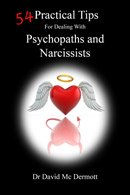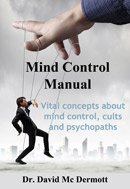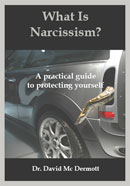Cults In Our Midst
The Author
Margaret Singer, the author of “Cults in our Midst”, was never in a cult but she demonstrates a remarkable understanding of how cults function and what the members experience.
Throughout her early working life as a psychologist, she had an interest in coercive persuasion and had the opportunity to study some of the Korean prisoners of war, alongside Dr. Robert Lifton, in the 1950s.
She then focused all her attention on the cult phenomenon, interviewing and counselling over 3000 people affected by cults.

1921-2003
What and who?
Her book, Cults in our Midst, starts out by defining what cults are and who joins them. She does a very nice job of undoing some of the myths that have grown up around cults. She explains that cult members are not weird, crazy, or mentally ill, but rather they are normal people who have been deceived into joining at vulnerable moments in their lives.
Nor do people go out looking for cults. Very often they are looking for something, companionship, the chance to help others, help with problems, etc. But Margaret Singer says that never once has an ex-member told her that they went looking for a guru to set them up in prostitution, flower selling, cocaine dealing, gun smuggling, child abuse, or living off garbage.
There is a tendency for society to see cult members as defective in some way. Or the parents are blamed for the way they have reared their child. Plus, there is a stigma to being a victim of scams and deceptions ( this can make the life of ex-cult members difficult).
Victims?
The tendency to blame the members of cultic relationships makes it very difficult to understand that they are actually victims. The actions of the cult in the relationship are overlooked or misunderstood.
Margaret Singer points out that there are commonly four classes of victims.
- 1. Victims of violent crimes
2. Victims of natural disasters and serious illnesses
3. Victims of terrorists and kidnappers
4. Victims of civil torts (who can go through the courts to claim for personal injuries, malpractice and other wrongs.
For Singer, there is a fifth group. People in situations of enforced dependency because they have been subjected to mind control or a thought reform program. (She does not suggest that people should think of themselves as victims forever, but the victim idea is useful to explain that being tricked by cults is as common as buying a pair of shoes that don't fit).
Threat to society
She then gives a brief history of cults, showing how they have evolved beyond simply being religious groups. Nowadays there are transformational groups, political groups, large group awareness trainings, psychological groups, occult and prosperity groups.
She then goes on to explain how cults are a direct threat to families, to children and even to large institutions. They destroy society by taking away freedoms and possessions and by regularly engaging in conspiracy and fraud.
Cults in our Midst explains how mind control works, attacking the self and producing a new identity. Singer explains that a lot of the cult tactics are so destructive that they would not be allowed in scientific experiments.
She explains the difference between education, advertising, propaganda, indoctrination and thought reform and suggests they are a continuum of influence and persuasion.
She also compares her six conditions for a thought reform environment:
-
- the person is unaware that there is a system controlling them,
- - their time and environment is controlled,
- - they're made fearful and dependent,
- - previous behaviors and attitudes are repressed,
- - new behaviors and attitudes are installed and
- - they are presented with a doctrine which actually has a closed logic.
to Lifton's eight criteria and the three stages of Schein - unfreezing, changing and refreezing of the identity.
How cults work
In part two of Cults in our Midst, Singer explains how cults work. Recruiting new members is one of the two main activities and she describes in some detail the recruitment process, how deception and lies are used to get commitment from unsuspecting members of the public.
In fact, she describes a study she once did with an ex-cult member. The member approached people in the street and used the pitch she had learned in the cult. When the person had agreed to come to an event, the ex-cult member then introduced Margaret Singer and the nature of the study was explained.
Most people were incredulous! They had been totally fooled by the ex-cult member. They believed her, they thought she was a nice person, she seemed honest, the conversation was smooth and effortless, and most of all, she couldn't be in a cult, because they thought that cults would use arguments and pressure to get people to join.
She also explains that nowadays young and old are targets for cults. Old people may have money and cults want money!
Persuasion techniques
Cults in our Midst then has chapters on physiological and psychological persuasion techniques where she outlines various mind control methods used in destructive cults.
For example, she explains how hyperventilation causes a drop in the carbon dioxide level in blood so it is more alkaline. This will produce dizziness, light-headedness, then numbness and tingling in the extremities with sweating, ringing in the ears and feelings of fear, panic or unreality. Prolonged over breathing can cause muscle cramps, chest pains and fainting. When they wake up, they are often aware that they've been through a dramatic experience.
These symptoms are familiar to cult leaders and manipulators and very often what they do is reinterpret or reframe the meaning of the experiences. So the members are told that the symptoms are indicating that they are changing, or moving closer to God, or progressing in a positive way, etc.
Needless to say, there is not much critical thinking or personal decision making going on when someone is hyperventilating!
How easy is it to induce? Loud shouting and chanting, especially with fists in the air will quickly cause somebody to over breathe. Repetitive chanting, speaking in tongues for any length of time or forceful repetitive body movements are equally efficient.

Margaret Singer also discusses meditation and how it is used by destructive sects and yoga cults. Relaxation-induced anxiety is a cluster of distressing and uncomfortable experiences that some people have when they try to meditate. Again some cults will redefine the symptoms as good and push the member to meditate even more. This can have disastrous consequences.
She also explains how hours of meditation everyday can cause such things as blackouts, anxiety attacks, hallucinations, memory difficulties, inappropriate bursts of emotion, muscle jerking, seizures, emotional flatness, and loss of boundaries where a person's reality just disintegrates, and other mental illnesses.
She believes that meditation is neither good nor bad and understands that many people have benefited from simple meditation techniques. However, when people are forced into doing it for hours every day, the effects can be disastrous.
Singer also discusses hypnosis, peer pressure, mind reading tricks, and emotional manipulation.
Infiltrating the workplace
There is also a chapter on how cults are infiltrating the workplace with many destructive cults offering business courses on sales, negotiation, decision making, etc.
Cults in our Midst outlines the process in a Large Group Awareness Training and how mind control techniques are used to indoctrinate members. For example, how the leader starts out as a stern taskmaster with absolute authority that nobody is allowed to challenge, and changes to a seductive, charming, loving father (or mother) who wants you to buy the next course.
The difficulty, she says, is that very often workers are sent to these courses. It's not an option for them.
Leaving a cult
Section 3 of Cults in our Midst is dedicated to what can be done to help people to leave and recover from the experience. She outlines the particular difficulties experienced by children who are born into a cult.
She explains in some detail why it is so difficult for members to leave cults. The five D's are:
- Deception - from the first moment of meeting the cult
- Debilitation - long work hours, degree of commitment, psychological pressures, internal conflicts
- Dependency - as a result of many of the mind control techniques
- Dread - phobias instilled by the leader that leaving the group will bring problems
- Desensitisation - the members typically excuse and justify bad and immoral behavior in the group and so are no longer bothered by it.
Cults in our Midst also offers advice on finding exit counsellors and other professionals to help ex-members.
After-effects
Cults in our Midst explains the various after-effects of being in cults and now some problems are associated with the mind control techniques used in the group. For example, when there's lots of hypnosis, meditation and hyperventilation, it's common to see relaxation-induced anxiety, panic attacks, cognitive inefficiencies, and other dissociative states. When groups use aversive emotional arousal techniques such as excessive criticism, strict discipline and punishments, ex-members often suffer from guilt, shame, self blaming attitudes, fears and paranoia, excessive doubts and panic attacks and problems making their own decisions.
Ex-members often have to deal with fundamental, practical issues related to daily living, develop a new social network, repair old relationships and examine the beliefs and ideas that they had taken on while in the group. And all this while experiencing psychological and emotional difficulties which can be very intense at the start.
Cults in our Midst gives explanations for a long list of symptoms and problems experienced by ex-cult members. This can be very reassuring for ex-members, knowing that what they're experiencing is not unique, that it's normal, and that it will pass!
All in all, Cults in our Midst is an excellent book for people who want to understand how cults work, the mind control techniques used, and what happens when people leave a destructive cult.
Return from Cults in our Midst to Books About Decision Making
Return from Cults in our Midst to Decision Making Confidence
Like this page?
Consultations
Would you like to talk to someone about your situation?
If you think you are or have been in a cult or a destructive relationship, or a friend or family member might be in a cult and you want to talk to someone, send me a message on the Contact page and we can arrange to talk. All communication will be treated in the strictest confidence.
Available now!

54 Practical Tips For Dealing With Psychopaths and Narcissists
You have the theory but how do you actually apply it? This book spells it out...
Mind Control Manual

Vital concepts about mind control, cults
and psychopaths
Do you think that you might be in an abusive relationship? Are you realizing that the group you are in may be a cult?
What Is Narcissism?

A practical guide to protecting yourself
Do you think you are being taken advantage of emotionally, physically, sexually or financially in your relationship? Do you want to leave but you can't seem to get away?
Tips for dealing with psychopaths and narcissists
Fortnightly newsletter with practical tips and ideasLearn more...
Plus!
'7 Vital Do's and Don'ts of Decision Making' when you subscribe!